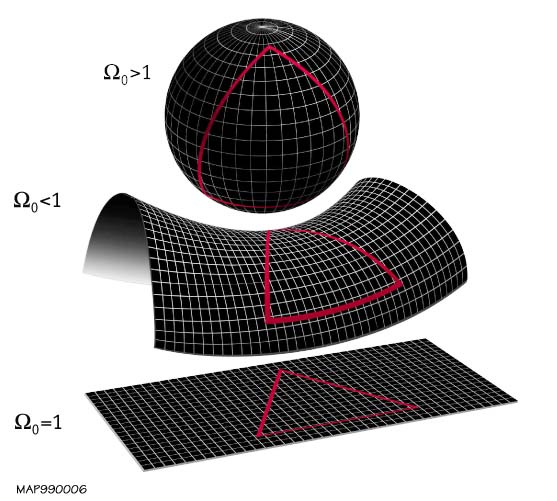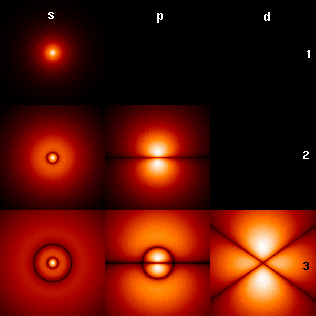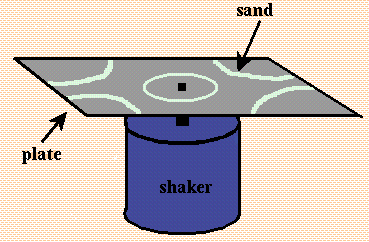I'm not quite sure if this guy makes any sense - but it's interesting (as much as I understand).
Full Citation:
Budnik, Solomon. (2013, Apr 15). Theory of Transitional Universe (New Model of Space-Time). Available at SSRN: http://ssrn.com/abstract=2251032 or http://dx.doi.org/10.2139/ssrn.2251032
Theory of Transitional Universe (New Model of Space-Time)
Solomon Budnik
Independent
April 15, 2013
Abstract:
This is a theory that makes macroscopic predictions based on dual space-time continuum which is finite in its infinity, due to its horizon and future reverse polarity.
It implies that there is an absolute frame of reference in our uniform double cone model (as observed in cosmos) which shows that the state of our universe is a deterministic function of its previous state of a primordial universe where the rotating mass of first order extended in our universe to second order in the angular momentum.
Locality assumes that the current state of space-time is determined by the states of a fixed number of previous time steps. Discretized difference equations use at least the current and previous time steps if they are second order systems like the wave equation. Physical quantities come in pairs which are called conjugate quantities. According to quantum mechanics, under some conditions, a pair of quantum systems may be described by a single wave function, which encodes the probabilities of the outcomes of experiments that may be performed on the two systems, whether jointly or individually.
It means that there couldn't be a sudden “birth” of our universe in a Big Bang without its time delayed “conception” in a previous universe.
Introduction
"We have a complete inventory of the universe," Sean Carroll, a California Institute of technology cosmologist, has said, “and it makes no sense.”
And it is obvious now that the previous cosmic model didn’t actually integrate time, for it wasn’t a space-time model per se, but a limited comprehension of the space-matter-energy correlation with wrongly perceived light-gravity-time interaction: there can’t be gravitational bending of light and time delay in non-visible cosmic spectrum (which is 95% of our universe) and in the anti-gravity field of the galaxies. So the observed effects of quasi gravitational lensing (in fact diffraction of light per position-momentum uncertainty principle) and the Shapiro delay should be rightfully attributed to the Faraday rotation and relative phase shift in the interstellar medium, the Coanda effect and shift, and the superposition, dispersion and deflection (echo) of the manmade radar beams radiated in the multi-radiated cosmos.
Moreover, light is an inhomogeneous wave (not uniform) and cannot be bent as such by the gravity. Light can indeed deviate from its rectilinear path due to "ray-optics" limit (geometrical optics) and due to nonlinear self-oscillation and chaotic interference of the particles in analogy with the free-electron-laser chaos; under such conditions the time delay can actually take place.So the shape of the universe is a matter of debate in physical cosmology over the local and global geometry of the universe which considers both curvature and topology, though, strictly speaking, it goes beyond both.
The Big Bang theorists have overlooked the Coriolis, Doppler, and Chladni effects in the universe, as revealed in this article to proper explain the rotation and expansion of our universe.So we present here a new space-time model with a 4-dimensional double cone structure of our universe (successor of primordial universe), confirmed by natural phenomena (as elaborated below) which supersedes the Big Bang theory.
In re: the ΛCDM or Lambda-CDM model is a parameterization of the Big Bang cosmological model in which the universe contains a cosmological constant (usually denoted by the Greek capital letter lambda: Λ), which is supposed to be equivalent to the energy density in otherwise empty space. It was proposed by Albert Einstein as a modification of his original theory of general relativity to achieve a stationary universe. Einstein abandoned that concept since Hubble redshift indicated that the universe might not be stationary, contrary to Einstein’s idea that the universe is unchanging.
Fig.1
Shown in fig.1 is the common local geometry of the universe which is determined by whether
the density parameter Ω is greater than, less than, or equal to 1. From top to bottom: a spherical universe with Ω > 1, a hyperbolic universe with Ω < 1, and a flat universe with Ω = 1.
Read the whole article - and then explain it to me if possible in the comments.Scientists reached a consensus that there was more to the universe than meets the eye. In computer simulations of our galaxy, the Milky Way, theorists found that the center would not hold. Based on what we can see of it, our galaxy doesn’t have enough mass to keep everything in place. As it rotates, it should disintegrate, shedding stars and gas in every direction.
So to advance our knowledge, a detailed study of the cosmic space has been made and elaborated in this article from a different perspective to supersede the Big Bang and Steady State concepts and modify the special theory of relativity based on new notions and discoveries in an attempt to unify Einstein's theory of relativity and the revolution of quantum mechanics. Accordingly, we present here a new space-time model – a tandem of primordial and current universes coupled at their narrowest double cone points.
Said tandem universes represent the duality of nature, as is the space-time notion and the wave–particle duality of matter.
As the distance between galaxy clusters is increasing, it is inferred that everything was closer together in the past, since galaxies and clusters have an apparent velocity directly away from our vantage point.
There was previously little evidence regarding the absolute earliest instant of the expansion. That concerns also the Big Bang (BB) concept which cannot and does not provide sufficient explanation for such an initial condition; rather, it tries to describe the supposed evolution of the universe from that point on. The Big Bang idea and model is based on the observation that galaxies seem to move away from the earth, and that radiation comes from the point where the Big Bang supposedly occurred as the alleged creation of our universe.
The BB theory doesn’t explain how the pieces of matter that had never been in contact with each other have come to equilibrium at the very same temperature and then experienced an incredible burst of expansion called "inflation." For that inflation to have taken place, the universe at the time of the Big Bang must have been filled with an unstable form of energy whose nature is not yet known and which had allegedly led to the clumping and ignition of matter, with no explosion.
This is a wrong celestial theory, for there couldn’t be a dimensionless propagation constant and equal mass distribution of matter forced to spread by the alleged quantum noise (?!).
The Big Bang is believed to have produced equal amounts of matter and antimatter. However, whenever matter and antimatter meet, they annihilate in a burst of gamma rays, so the BB theory suggests that both matter and antimatter annihilated long time ago, and the universe should consist today just of radiation.
Said erroneous assumptions can be disproved, for there were no volume dimensions or directions in the void (empty cosmic space), since it had no boundaries, and if it had had, the shock wave of the BB would had bounced back, dispersed and destroyed the cosmic matter.
Accordingly, what the San Diego astronomers considered in 2005 to be the vestiges of sound waves that allegedly rumbled through the universe after the Big Bang, was in fact the echo of the BB, and this corresponds with my new theory of acoustics (see my book ―The Absolute Tone) where sound waves have actually not linear but spiral form of propagation, and that could be the only form of propagation in space. That space shockwave must have spread the matter and gave its spiral shape to the formation of galaxies, for a spiral is the best shape to conserve energy and resonate its elements. So we might less consider the annihilation and decay of elementary particles, but concentrate more on their resonance in space-time in a Chladni-like effect based on quantum mechanics of the dual particle-like and wave-like behavior and interactions of energy and matter, as in Förster resonance energy transfer (ill. 1).
(Ill. 1. Probability densities corresponding to the wave functions of an electron in a hydrogen atom possessing definite energy levels (increasing from the top of the image to the bottom: n = 1, 2, 3, ...) and angular momenta (increasing across from left to right: s, p, d, ...). Brighter areas correspond to higher probability density in a position measurement. Wave functions like these are directly comparable to Chladni's figures of acoustic modes of vibration in classical physics, and are indeed modes of oscillation as well, possessing a sharp energy and, thus, a definite frequency. The angular momentum and energy are quantized, and take only discrete values (as is also the case with resonant frequencies in acoustics, ill. 2, 3 below)
Compare the ill. 1 above images with the Chladni plate acoustic effects (ill. 2, 3):
(Ill. 2)(Ill. 3)
Having this in mind, we can construct a disc-like spacecraft with a Chladni plate effect, where the atomic reactor in the center of the rotating disc would generate charged particles resonating in a modulating unison of specific frequencies amplified by the applied magnetic field and accelerated in circular groves of particles accelerator on the surface of the disc-craft, leaving behind a whirlpool of matter and propelling the craft in space like a Frisbee. (Patent rights for this spacecraft’s design and propulsion belong to the author, Solomon Budnik.)
In re: Effects of tune modulation on particles trapped in 1D resonance islands, FERMILAB October 1993: experimental data obtained at Indiana University Cyclotron Facility for the 4th order resonance islands has confirmed this characteristic feature. The beam, driven by betatron tune modulation, was observed for the first time to travel from near the center of resonance islands toward the separatrix. The experimental data are characterized by the onset of large response at a critical modulation amplitude and frequency, which are compared with theoretical models).
(Ill 4. Chladni effect: vibration of a single normal mode of a circular disc with a pinned boundary condition along the entire outer edge)





No comments:
Post a Comment